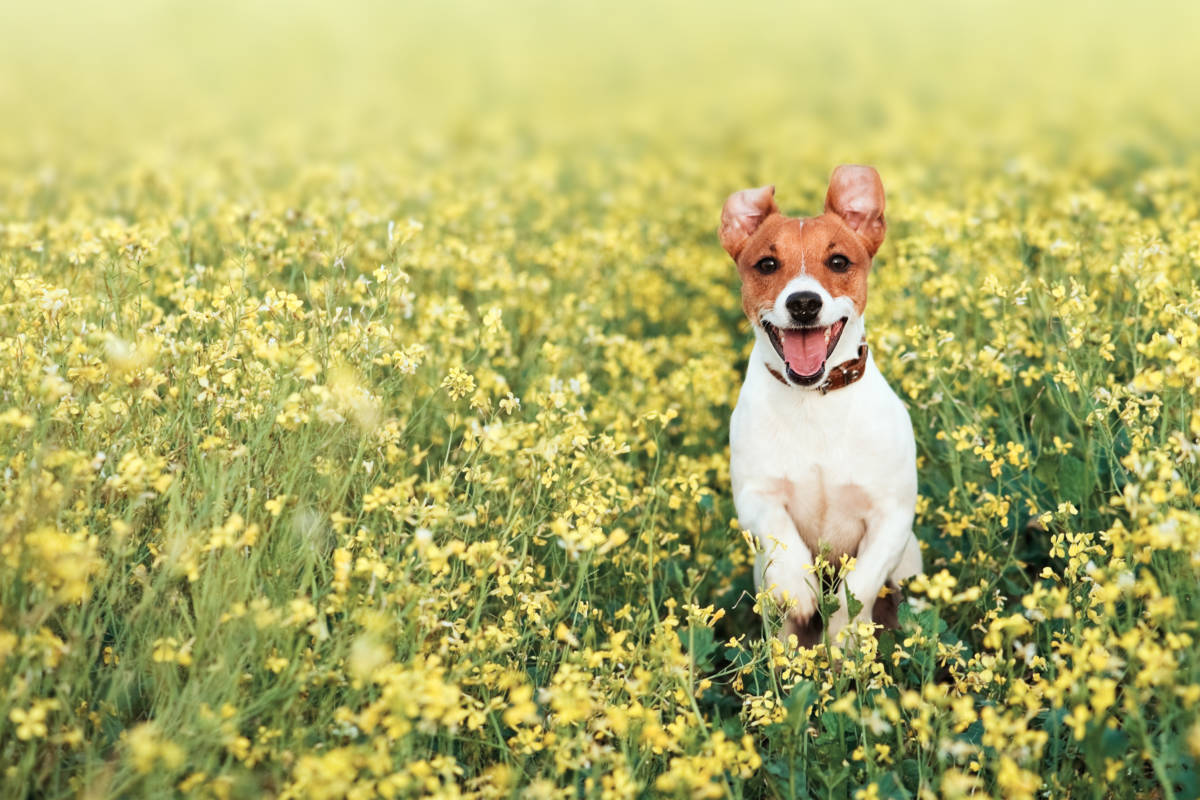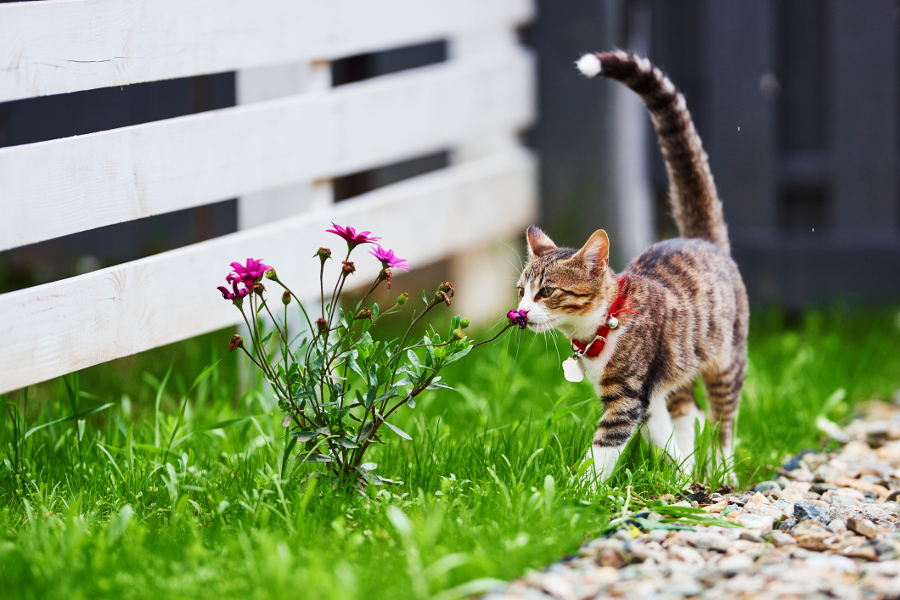14 Poisonous Plants You Shouldn't Keep Around Dogs and Cats
Learn what plants are poisonous to dogs and cats, and which ones are safe to keep around your furry friends.
Feb 13, 2022
Part of what we all love about our pets is their sense of adventure and wonder. But sometimes it’s those very traits that can get them in trouble. From running through the park to the less encouraged rummaging through your flower bed, dogs and cats often get their noses in places they shouldn’t.
Though most plants are harmless to pets, a few could make them sick, or worse, if ingested. Here is a list of plants you should be particularly cautious with or avoid keeping in the house altogether if you have a furry friend around.
Plants poisonous to dogs

Azaleas
Azaleas can have some pretty harmful effects on Fido’s stomach. Eating just a few leaves can cause dogs and other pets to vomit, drool excessively, or have diarrhea. If not treated by a veterinarian immediately, pets that have ingested azaleas can slip into a coma and even die.
Autumn crocus
Unlike some other plants on this list, you’ll know right away if your pet ate an autumn crocus. In addition to severe kidney damage, heart arrhythmia, and seizures, they also cause an intense burning sensation. While you should stay away from the entire plant, the most toxic part of it is the bulb.
Kalanchoe
Depending on how much kalanchoe your pet eats, symptoms can vary from an upset stomach and excess drool to an irregular heartbeat. And because the plant can take anywhere from 12 hours to four days to fully affect your dog, you should bring him to the vet right away if you notice he’s had any kalanchoe.
Oleander
Similar to azaleas, oleander can severely affect a dog’s stomach. This common outdoor shrub sprouts incredibly toxic leaves that can cause vomiting, dizziness, and even an impaired heartbeat. Oleander is also poisonous to cats, so it’s a definite “no-no” for pet-loving houses.
Lily of the valley
If your four-legged friend is even around lily of the valley, you should get him tested for cardiac glycosides, the toxic agent found in the plant. If ingested, pets can experience vomiting, diarrhea, cardiac arrhythmia, and even seizures.
Cyclamen
Though every part of the plant is moderately toxic, the most dangerous parts are the tubers and roots. Even if your furry friend only chews on them, cyclamen roots can cause chronic drooling, vomiting, and diarrhea.
Amaryllis
This easy-to-grow flower is popular all year round, but it’s perhaps never more in demand than around the winter holidays — but humans aren’t the only ones attracted to its beauty. If a dog nibbles on the bulb of an amaryllis plant, she'll likely experience excessive salivation, gastrointestinal problems, and tremors.
Carnations
Carnations' many colors and intoxicating scent make them a popular gifting flower. But while your loved will enjoy smelling them, so will their dog. If dogs decide to graze on your gift, they can experience an upset stomach and diarrhea. But the good news is that it would take dozens of bundles to do any permanent or serious damage to your furry friend.
Plants poisonous to cats

Castor bean
These leafy green plants are highly toxic to cats and can cause their throat and mouth to burn, extreme thirst, vomiting, kidney failure, and seizures.
English ivy
Also known as California ivy or sweetheart ivy, English ivy is a common indoor decorative plant that you should definitely keep out of reach of nosy cats. If swallowed, English ivy can cause intense stomach pains, excessive salivation, and diarrhea.
Sago palm
Originating in Japan, sago palms resemble a cross between a small bush and a tree, making them a popular backyard plant. Throughout the year, their small bristles fall on the ground and can easily be swallowed by outdoor cats. If that happens, they can cause severe liver damage; if left untreated, they can cause liver failure and death.
Yew
Yew is one of the most commonly known poisonous plants, as it’s potentially fatal if swallowed by cats, dogs, and humans. The most common symptoms of yew poisoning are weakness and exhaustion, difficulty breathing, sudden changes in blood pressure, tremors, and dilated pupils
Tulips
Like many other bulb flowering plants on our list, tulips shouldn’t be kept near dogs and cats. The toxins tulipalin A and tulipalin B can be found throughout the flower’s petals, stem, and leaves but are especially potent in the bulb. If swallowed, these toxins can cause appetite loss (and, therefore, weight loss), seizures, and a rapid heartbeat.
Spanish thyme
Though it’s believed to hold medicinal healing properties for humans, Spanish thyme can have a very different outcome for cats if they eat it. Also known by the names coleus, Indian borage, and country borage, Spanish thyme’s oils are so toxic that just rubbing against the plant is enough to burn a short-haired cat’s skin. If eaten, it’ll cause almost immediate symptoms, such as liver failure, shortness of breath, and vomiting.
Pet-friendly plants and flowers
While you should never purposely feed your pets flowers or plants, many plants won’t cause your furry friends any harm if accidentally ingested.
- Daisies
- Roses
- Rosemary
- Orchids
- Sunflowers
- Peruvian lily and Brazilian lily
Feel like adopting one more “furry” friend into your family? Our Fabulous Feline™ collection makes the perfect (and, most importantly, safe) addition to any animal-loving home!







